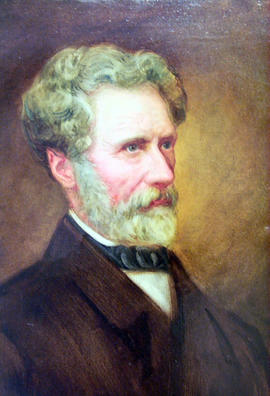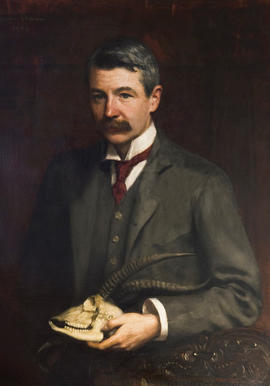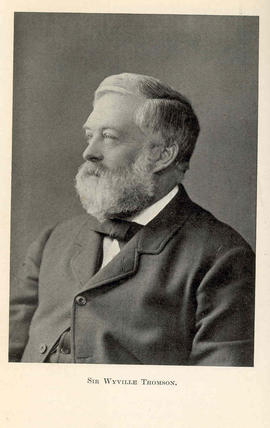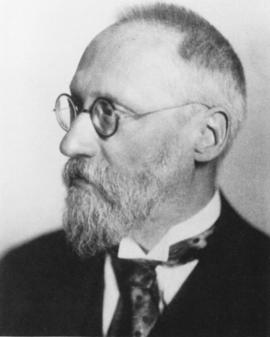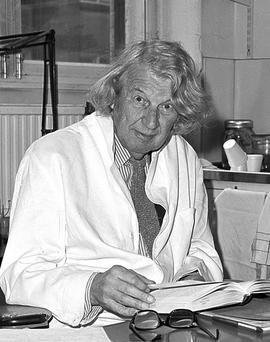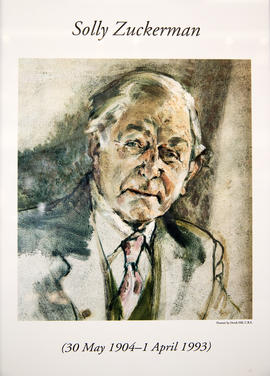Carl Jakob Sundevall was a Swedish zoologist. Sundevall studied at Lund University, where he became a Ph.D. in 1823. After traveling to East Asia, he studied medicine, graduating as Doctor of Medicine in 1830. He was employed at the Swedish Museum of Natural History, Stockholm from 1833, and was professor and keeper of the vertebrate section from 1839 to 1871. He wrote Svenska Foglarna (1856–87) which described 238 species of birds observed in Sweden. He classified a number of birds collected in southern Africa by Johan August Wahlberg. In 1835, he developed a phylogeny for the birds based on the muscles of the hip and leg that contributed to later work by Thomas Huxley. He then went on to examine the arrangement of the deep plantar tendons in the bird's foot. This latter information is still used by avian taxonomists. Sundevall was also an entomologist and arachnologist, for which (for the latter field) in 1833 he published an early catalog Conspectus Arachnidum. Much later in 1862, he wrote a monograph proposing a universal phonetic alphabet, Om phonetiska bokstäver. Sundevall is commemorated in the scientific names of four species of reptiles: Elapsoidea sundevalli, Leptotyphlops sundewalli, Mochlus sundevallii, and Prosymna sundevalli.[1] Also the rodent, Sundevall's jird (Meriones crassus) is named after him.
Thomas worked at the Natural History Museum on mammals, describing about 2,000 new species and subspecies for the first time. He was appointed to the museum secretary's office in 1876, transferring to the zoological department in 1878. In 1891, Thomas married Mary Kane, daughter of Sir Andrew Clark, heiress to a fortune, which gave him the finances to hire mammal collectors and present their specimens to the museum. He also did field work himself in Western Europe and South America. His wife shared his interest in natural history, and accompanied him on collecting trips. In 1896, when William Henry Flower took control of the department, he hired Richard Lydekker to rearrange the exhibitions, allowing Thomas to concentrate on these new specimens
Sir Charles Wyville Thomson was a Scottish natural historian and marine zoologist. He served as the chief scientist on the Challenger expedition. His work there revolutionised oceanography and led to his knighthood
William Homan Thorpe was Professor of Animal Ethology at the University of Cambridge, and a British zoologist, ethologist and ornithologist
In 1906 he obtained his degree from the national veterinary school at Lyon, afterwards attaining a bachelor's degree in natural sciences in 1912, and a doctorate of sciences with a thesis involving plant physiology in 1920. During his career he worked in a military veterinary research laboratory and conducted studies as a microbiologist and immunologist at the Pasteur Institute. In 1931 he resigned from military service, and in 1934 was appointed director of the Vincennes Zoo in Paris. From 1942-1949, he was director of the Museum National d'Histoire Naturelle. In 1937 he scientifically described the kouprey, based on a young male captured in Preah Vihear Province, Cambodia
Franz Werner was an Austrian zoologist and explorer. Specialising as a herpetologist and entomologist, Werner described numerous species and other taxa of frogs, snakes, insects and other organisms
Otto von Wettstein, name also given as Otto Wettstein-Westersheimb, was an Austrian Zoologist. He was the son of botanist Richard Wettstein and the brother of botanist Fritz von Wettstein. He is best known for his work in the field of herpetology
Zoologist, Acting Superintendent of the Gardens and Secretary to the Garden Committee of the Zoological Society of London (appointed 1902)
John Zachary Young was an English zoologist and neurophysiologist
Solomon 'Solly' Zuckerman was a British public servant, zoologist and operational research pioneer. He was born in Cape Town in 1904, the second child of Moses and Rebecca Zuckerman (nee Glaser). Both his parents were the children of Jewish immigrants from Russia. He was educated at the South African College School. After studying medicine at the University of Cape Town and later attending Yale University, he went to London in 1926 to complete his studies at the University College Hospital Medical School.
He began his career at the Zoological Society of London in 1928, and worked as a research anatomist until 1932. It was in this period that he founded the intellectual dining club, Tots and Quots. In 1932, he published his work 'Social Life of Monkeys and Apes'.
He taught at the University of Oxford from 1934 to 1945, during which time he was elected to a Fellowship of the Royal Society.
He was a scientific advisor to the Allies on bombing strategy in the Second World War, for his work to advance the cause of nuclear non-proliferation, and for his role in bringing attention to global economic issues.
Zuckerman married Lady Joan Rufus Isaacs in 1939 and they had two children. He died in London in 1993 following a heart attack.
